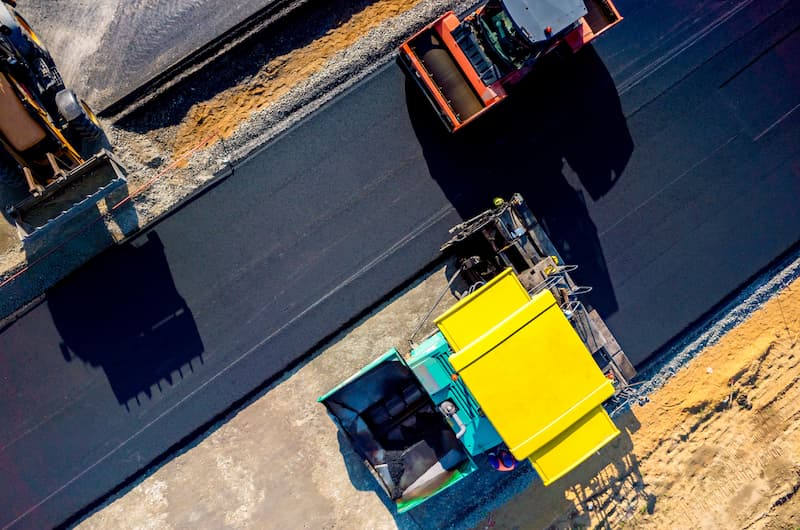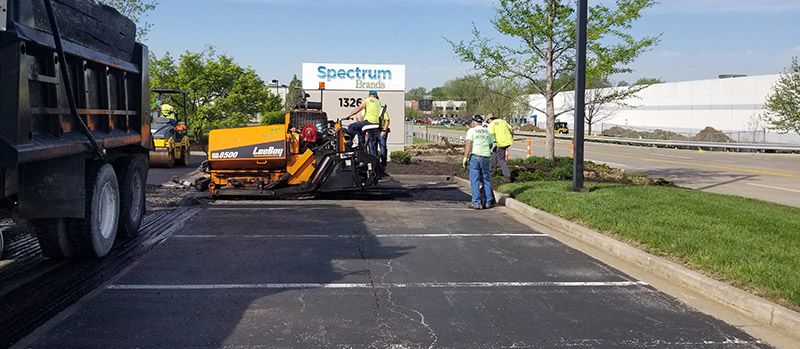Unknown Facts About A1 Professional Asphalt & Sealing Llc
Unknown Facts About A1 Professional Asphalt & Sealing Llc
Blog Article
The Facts About A1 Professional Asphalt & Sealing Llc Uncovered
Table of Contents10 Simple Techniques For A1 Professional Asphalt & Sealing LlcWhat Does A1 Professional Asphalt & Sealing Llc Do?10 Simple Techniques For A1 Professional Asphalt & Sealing LlcGet This Report about A1 Professional Asphalt & Sealing LlcNot known Details About A1 Professional Asphalt & Sealing Llc

The oil in an auto engine is not simply oil. It includes a range of additives to improve the car's efficiency. These include polymers, thickness modifiers, heat stabilizers, extra lubricants, and wear additives. The REOB includes all the ingredients that remained in the waste oil along with the wear steels from the engine (generally iron and copper).
However, by making lots of blends using various REOB samples and different asphalt binders, the variants greatly can be balanced out. Numerous States offered samples of well-known REOB structure to TFHRC scientists, that assessed the samples to contrast the portion of added (known) REOB to the found (tested) amount. The analyses revealed an equivalent percent of added and located REOB.
How A1 Professional Asphalt & Sealing Llc can Save You Time, Stress, and Money.
They obtained a frustrating action. The TFHRC researchers assessed 1,532 samples from 40 States, one Canadian district, and two Government Lands Highway divisions. They assessed each example twiceamounting to more than 3,000 evaluations. None of those States understood that the asphalt they were buying consisted of REOB. One State urged its examples had no REOB.
Of the 1,532 examples evaluated, 12 percent had REOB, and some included significantly high degrees of it at 1020 percent. The highest possible degree was 34 percent in a sample from Texas, which TxDOT had made use of in a patching compound. This testing additionally revealed the existence of phosphoric acid in 11 percent of the examples, and 2 percent consisted of ground tire rubber.
2 years earlier at TRB's annual conference, the Federal scientists held an REOB workshop and offered the findings of their research laboratory analyses to a standing room-only group. Some companies do not particularly outlaw REOB, they do enforce physical tests that preclude its useeffectively a restriction. Others do not prohibit it by specification, however have contracts with asphalt providers to prevent the usage of REOB
The Ultimate Guide To A1 Professional Asphalt & Sealing Llc
A handful do permit REOB, some within particular restrictions. For example, Ohio and Texas limitation levels to less than 5 percent of the asphalt. To establish a trustworthy test technique that all States can make use of, the TFHRC researchers set up a round-robin test plan. The participants are 11 State highway agencies (Illinois, Massachusetts, Minnesota, Mississippi, Montana, North Carolina, Oklahoma, South Carolina, Texas, Vermont, and Wyoming), 2 independent screening labs, the Ministry of Transport in Ontario, Queen's College in Ontario, and an Ontario paving service provider.
In overall, the scientists prepared and delivered 720 blends. The individuals are examining the examples individually utilizing the standards offered by the TFHRC scientists. The round-robin screening is nearly finished, and TFHRC is in the process of collecting the results. The outcome will certainly be a recommended AASHTO examination method that any type of State can take on and utilize (what is cold asphalt?).
The pavement with REOB, which is located 0.6 mile (1 kilometer) from the pavement without REOB, has similar subgrade, traffic thickness, and environment. However, the segment of Highway655 with 5 to 10 percent REOB showed substantial cracking. In this example, the presence of REOB was the determined root cause of cracking at a reduced temperatures.
A section of test sidewalk in Minnesota (MN1-4) located to consist of i was reading this REOB additionally broke prematurely. The sidewalk executed well for the very first 3 to 4 years, however then began to split.
Facts About A1 Professional Asphalt & Sealing Llc Revealed
The examinations were not considerable, but they revealed that at degrees of 6 percent or more, the tensile strength of the asphalt dropped substantially. At a degree of 3.5 percent REOB, the variation in the physical test approaches was greater than the impact of REOB. It was difficult for scientists to analyze whether REOB was present. https://gravatar.com/a1asphaltsealng.

One binder criterion thought about is the difference in between the reduced temperature crucial requirements temperature for tightness (S) in the flexing beam of light rheometer and the flexing beam of light rheometer creep incline (m-value) kept in mind as Tcritical. 2 independent research study teams, one from AASHTO and the various other from the Asphalt Institute, ended that more research is required on the usage of REOB in asphalt.
Previously, all asphalt screening measured design residential properties such as tightness. These tests do disappoint what materials had actually been included to the asphalt. One example gotten throughout the TFHRC study had a really odd evaluation. The example had the complying with examination outcomes: Superpave PG 64-28 with a high temperature level grade of 67.3 Tcritical on the flexing beam of light rheometer was 6.7 degrees Celsius.

Not known Details About A1 Professional Asphalt & Sealing Llc
These outcomes show there are weaknesses in the standardized design testing methods that might be exploited. The manufacturer might have an economic benefit and the item passes all the standardized examinations, yet the product may not be useful to making sure long-term efficiency. To address this issue and the growth of brand-new asphalt additives and extenders, TFHRC is starting a study program to make use of handheld spectroscopic gadgets, x-ray fluorescence spectroscopy, and Fourier change infrared spectroscopy to make it possible for evaluations to be done in the field rather than having to take examples back to the laboratory.
Report this page